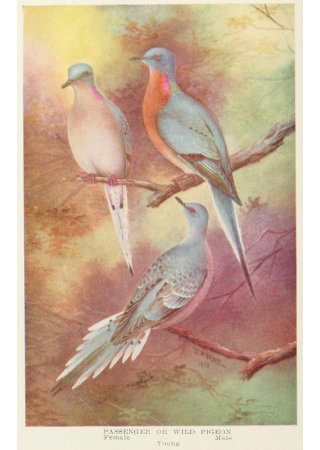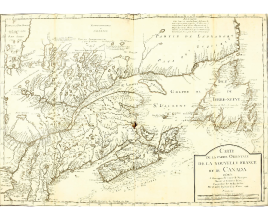Voyages to the New World
- ... in 1524, this French seafarer took part in a journey of the famous Florentine traveller Giovanni da Verrazano, which reached the shore of South Carolina, travelled to the shore of Nova Scotia and was the first to publish a description of North America?
- ... to the end of his life, Cartier believed that the St. Lawrence River was a new path to China?
- ... the only treasures Cartier discover were pyrite and quartz, which he took to be gold and diamonds?
- ... at the time of Cartier's discovery of Canada, Iroquois villages covered the entire area of the St. Lawrence River from Gaspéto Lake Ontario?
- ... Cartier named the Quebec promontory Cap Diamat (Cape Diamond)?
- ... the French settlers, Cartier brought to Canada, had to be taken back by him the next year, because they were poorly equipped and suffered from the cold; thus putting an end to the first French attempt to colonize Canada?
- ... in 1541, at the command of King Francis I, Seigneur de Roberval sailed with Cartier, tasked with establishing a colony in Canada?
- ... the Iroquois Indians taught the settlers to brew a potion from the bark and needles of white cedar, which saved many of their lives?
- The expeditions of Jacques Cartier ran from 1524 to 1543.
- The second expedition had three ships and 110 men, of which 25 died of scurvy.
- The expedition in 1541 had 10 ships, 400 sailors, 300 soldiers, new settlers, domestic livestock and beef-cattle.
- The trip across the Atlantic from Saint-Malo to Newfoundland took the first expedition only 20 days.
- Cartier died at the age of 66.
In 1534, the French king Francis I entrusted Cartier to undertake an expedition that would look for gold-bearing lands beyond Newfoundland and open a route to China. In April Cartier sailed with two ships from the French port of Saint-Malo and crossed the ocean. Then he moved to Newfoundland, sailed around the northern tip and via the channel Belle-Isle entered the Gulf of St. Lawrence, which he so discovered. In the area of today's Quebec, he investigated the lives of the Iroquois tribe. At the Gaspémission he erected a cross and claimed the entire land for the French king. During a subsequent expedition a year later, with three ships and about 110 men, he entered the Gulf of St. Lawrence, the mouth of the river of the same name and set off upriver, seeking the rich land of which the Huron Indians had told him. He got as far as the Indian village of Hochelaga, today's Montreal. He spent a cruelly freezing winter in Quebec, where his crew fell ill and 25 of them died. In spring of 1536, Cartier returned to France and brought with him the Indian chief Donnacona, who died in France in 1539. In 1541 the French king once again sent Cartier out, this time with five ships, for his third voyage, from which he returned to France in 1542.


